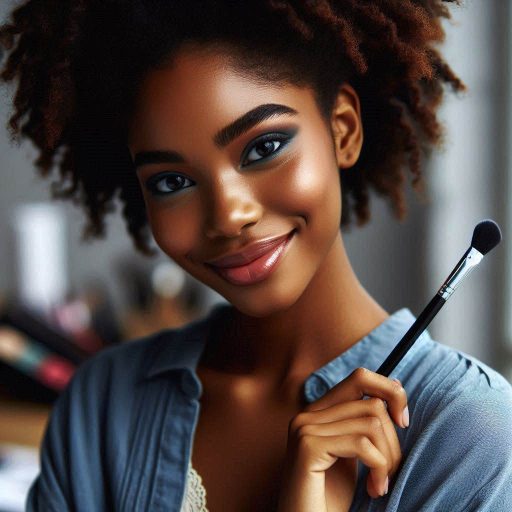Introduction
Balancing creativity and client expectations is crucial in any profession.
Creativity drives innovation and helps professionals stand out.
However, meeting client expectations ensures satisfaction and builds trust.
Achieving both requires skill and flexibility.
Clients often have specific goals or visions that might conflict with creative ideas.
Professionals must find ways to incorporate their creative flair while respecting client requirements.
The challenge lies in maintaining originality without straying too far from what the client wants.
Professionals frequently face situations where they must compromise their creative freedom to meet deadlines or stay within budget.
This can stifle creativity and cause frustration.
Moreover, miscommunication can lead to misunderstandings about project expectations, making it harder to deliver satisfactory results.
To overcome these challenges, professionals need to listen carefully to client needs and align their creative process accordingly.
By fostering open communication, they can strike a balance between delivering creative solutions and fulfilling client demands.
Understanding both the artistic vision and the practical constraints helps bridge this gap.
In essence, balancing creativity with client expectations is vital to maintaining professional relationships and delivering exceptional results.
Understanding the Client’s Vision and Goals
When it comes to balancing creativity and client expectations, the first step is to understand the client’s vision and goals for the project.
This foundational understanding will guide the creative process and ensure that the end result meets the client’s expectations.
Research and Gather Information
Before starting any project, take the time to research and gather as much information as possible about the client’s vision and goals.
This may involve reviewing past work, conducting interviews, or studying the client’s industry.
By gathering this information, you will have a better understanding of what the client is looking for and how you can best meet their expectations.
Communicate with the Client
Clear communication is key to ensuring a successful outcome.
Transform Your Career Today
Unlock a personalized career strategy that drives real results. Get tailored advice and a roadmap designed just for you.
Start NowSchedule regular check-ins with the client to discuss their expectations and provide updates on the project’s progress.
During these check-ins, make sure to ask clarifying questions and address any concerns the client may have.
This open line of communication will help prevent misunderstandings and ensure that both parties are on the same page.
By taking the time to understand the client’s vision and goals, you set the stage for a successful collaboration that balances creativity with meeting the client’s expectations.
Read: The Impact of Digital Art on Makeup Design
Set realistic expectations from the beginning
Communicating openly with your client from the start is crucial in managing their expectations.
By being transparent about what you can realistically achieve, you avoid setting false hopes that could lead to disappointment later on.
Setting clear boundaries on what is feasible helps in establishing trust and credibility with your client.
Transparency is key
When discussing the project, encourage your client to share their vision and expectations.
Listen attentively and ask questions to ensure you have a full understanding of their needs.
In return, share your creative process and any potential roadblocks that may arise.
This open dialogue creates a collaborative environment where both parties feel heard and understood.
Realistic timelines and budgets
Setting achievable deadlines is essential to managing client expectations.
Factor in buffer time for unexpected delays to avoid rushing through the project.
Additionally, clearly outline the budget and provide a detailed breakdown of costs.
By being upfront about expenses, you build trust and avoid surprises down the line.
Read: Multimedia Artist Salary: What to Expect in 2024
Present multiple creative solutions
When it comes to balancing creativity and client expectations, one effective approach is to present multiple creative solutions to your client.
This not only demonstrates your creativity but also shows that you are willing to consider different options that align with the client’s goals.
Brainstorm and present multiple creative solutions
Start by brainstorming a variety of ideas that could potentially meet the client’s objectives.
Transform Your Career Today
Unlock a personalized career strategy that drives real results. Get tailored advice and a roadmap designed just for you.
Start NowConsider different angles, approaches, and visual styles that could be incorporated into the project.
Think outside the box and don’t be afraid to push the boundaries of traditional design concepts.
Offer different options to showcase your creativity while keeping the client’s preferences in mind
Once you have a range of creative solutions, present them to the client in a clear and organized manner.
Explain the rationale behind each option and how it addresses the client’s goals and expectations.
Highlight the unique features of each solution and how they contribute to a successful outcome.
Be open to feedback and willing to make revisions based on the client’s preferences.
By providing multiple creative solutions, you show that you are not only capable of thinking creatively but also adaptable to the client’s needs.
This approach fosters collaboration and allows for a more dynamic and engaging creative process.
Read: Collaborating with Other Artists: Tips for Success

Seek feedback and collaboration
Encourage open communication with the client throughout the project
Feedback and collaboration are essential components of balancing creativity and meeting client expectations.
By seeking feedback from clients and collaborating with them throughout the project, you can ensure that your creative vision aligns with their expectations.
This process can lead to a more successful and satisfying outcome for both parties.
Incorporate feedback and suggestions from the client to ensure they are satisfied with the final result
Here are some strategies you can use to effectively seek feedback and encourage collaboration with your clients:
- Establish open lines of communication: From the outset of the project, make it clear to your clients that you welcome their feedback and input.
Encourage them to express their thoughts, ideas, and concerns openly so that you can address them promptly. - Schedule regular check-ins: Set up regular meetings or check-ins with your clients to discuss the progress of the project.
This will give them the opportunity to provide feedback and make suggestions along the way, rather than waiting until the end of the project to voice their opinions. - Actively listen to your clients: When receiving feedback from your clients, make sure to listen attentively and consider their input seriously.
Even if their suggestions may challenge your creative vision, it is important to respect their perspective and find a compromise that satisfies both parties. - Implement client feedback: It is crucial to incorporate feedback and suggestions from your clients into your work.
By doing so, you can ensure that the final result meets their expectations and aligns with their vision.
This collaborative approach can help build trust and strengthen your relationship with your clients. - Provide updates and revisions: Keep your clients informed of any changes or updates to the project and be willing to make revisions based on their feedback.
This will demonstrate your commitment to meeting their needs and ensuring their satisfaction with the final product.
By seeking feedback and collaborating with your clients throughout the creative process, you can strike a balance between your artistic vision and their expectations.
This approach can lead to a more successful outcome and a stronger client relationship.
Remember, communication and collaboration are key to achieving a harmonious blend of creativity and meeting client needs.
Read: Becoming a Multimedia Artist: Essential Skills Guide
Stay true to your creative vision
It can be challenging to balance your creative vision with client expectations, but it is essential for a successful project outcome.
Here are some tips on how to navigate this delicate balance:
Understand the client’s needs
Before diving into a project, take the time to thoroughly understand the client’s needs and expectations.
Transform Your Career Today
Unlock a personalized career strategy that drives real results. Get tailored advice and a roadmap designed just for you.
Start NowThis will help you tailor your creative vision to align with what the client is looking for.
Ask questions, listen actively, and clarify any uncertainties to ensure you are on the same page.
Communicate effectively
Clear and open communication is key in balancing creativity and client expectations.
Keep the client updated on your progress, share your ideas and concepts, and be receptive to feedback.
By maintaining a transparent dialogue, you can avoid misunderstandings and ensure that both parties are aligned throughout the project.
Set realistic goals
When setting project goals and timelines, be realistic about what can be achieved within the given constraints.
By managing expectations from the outset, you can prevent disappointment down the line.
Clearly define deliverables, deadlines, and scope of work to avoid scope creep and ensure that both you and the client are on the same page.
Collaborate with the client
Collaboration is key in striking a balance between creativity and meeting client expectations. Involve the client in the creative process by seeking their input and feedback.
By incorporating their ideas while staying true to your creative vision, you can create a final product that satisfies both parties.
Compromise when necessary
While it’s important to stay true to your creative vision, there may be times when compromising is necessary to meet client requirements.
Be flexible and willing to make adjustments where needed, while still aiming to preserve the essence of your original idea.
Finding common ground is essential in achieving a successful project outcome.
By following these tips and strategies, you can effectively balance creativity and client expectations to deliver exceptional results.
Remember that collaboration, communication, and compromise are key in achieving a harmonious relationship between your creative vision and the client’s needs.
Gain More Insights: Art and Design in Television Production
See Related Content: The Best Illustration Communities for Networking
Manage conflicts effectively
When balancing creativity and client expectations, conflicts are bound to arise.
It’s essential to handle these conflicts professionally to maintain a positive working relationship.
Address conflicts respectfully
- Listen actively to the client’s concerns and feedback.
- Acknowledge their perspective and validate their feelings.
- Avoid getting defensive or placing blame.
- Communicate openly and honestly about your own viewpoints.
By addressing conflicts in a respectful manner, you can create a space for open dialogue and problem-solving.
Transform Your Career Today
Unlock a personalized career strategy that drives real results. Get tailored advice and a roadmap designed just for you.
Start NowFind mutually satisfying solutions
- Brainstorm potential solutions that address both creative needs and client expectations.
- Consider compromises that meet in the middle without sacrificing quality or creativity.
- Seek feedback and input from both parties to co-create a solution.
- Focus on the end goal of producing outstanding work while meeting client needs.
By working together to find solutions that satisfy both parties, you can maintain a positive working relationship and achieve a successful outcome.
Conclusion
Balancing creativity and client expectations is crucial for successful projects.
It involves clear communication with clients to understand their needs and goals.
Creativity should be used strategically to meet these objectives effectively.
Collaboration between the client and creative professional is essential to ensure a shared vision.
Feedback and revisions should be welcomed and incorporated to refine the final product.
The end goal is to deliver a solution that not only meets client requirements but also showcases creativity.
Finding a balance that satisfies both parties leads to mutual satisfaction and long-term success.
It is the responsibility of creative professionals to manage expectations while pushing the boundaries of creativity.
By prioritizing communication, collaboration, and flexibility, a harmonious balance can be achieved.
Ultimately, the key is to create work that is both innovative and meets the client’s needs.
[E-Books for Sale]
The Big Book of 500 High-Paying Jobs in America: Unlock Your Earning Potential
$19.99 • 500 High-Paying Jobs • 330 pages
Explore 500 high-paying jobs in America and learn how to boost your career, earn more, and achieve success!
See All 500 High-Paying Jobs of this E-Book
1001 Professions Without a Degree: High-Paying American Jobs You Can Start Now
$19.99 • 1001 Professions Without a Degree • 174 pages
Discover 1001 high-paying jobs without a degree! Unlock career tips, skills, and success strategies for just $19.99!




